I photographed this nest of four Common Raven chicks on both of my recent Montana trips. It’s been fun to watch their development and the behaviors of both parents and youngsters.
Here you can see all four chicks – three of them begging for food from the parents who were perched nearby. This shot was taken two days after those that follow. The image quality of some of these photos isn’t very good but I found the behavior to be fascinating.
When this parent flew to the nest I was mostly watching and not clicking the shutter. I had no idea that I was about to see something new to me.
Suddenly one of the chicks began backing up to the edge of the nest and I figured it was about to defecate over the side. I was wrong.
The chick presented its cloacal opening to the parent…
and then its white excreta to the adult bird…
which took it into its beak.
I can’t be sure what happened next. The adult may have eaten the wastes, which they often do. Or they may be inside the bill to be discarded away from the nest.
Here’s what Birds of North America Online has to say about nest sanitation with this species:
“In Maine, parents of wild birds ate the feces of week-old chicks (BH); captive parents swallow feces of very young chicks (Gwinner 1965). Medium-aged young (2–3 wk old) defecate on rim of nest (Dorn 1972) or parents carry feces away (BH). Older chicks shoot runny feces over edge of nest (BH).”
The adult flew off almost immediately after collecting the feces but I can’t tell if they’re inside the bill or were eaten.
But the point of this post is that I was quite surprised that the chick deliberately presented its feces directly to the adult and that the parent actually picked them up as they exited the chick. I guess it was my assumption that the adult would remove them from the nest some time after they were deposited but in thinking about it, that would be very difficult to do given the unconsolidated mess involved.
From the looks of the nest I’m guessing that at this age the chicks often attempt to squirt outside the nest and we see the whitewash down the side as a result.
I suspect that some of my readers know much more about this than I do but in my naiveté I sure thought this little episode was interesting
One more interesting observation – last year this same nest was used by Swainson’s Hawks. This image, taken on August 22, shows the two juveniles raised in the nest last summer. They were quite reluctant to leave. Another thing that fascinates me is nest recycling by different species.
Wish I knew more about it…
Ron
Note: These photos were taken from a road while I was shooting from inside my pickup. I never approached the nest.


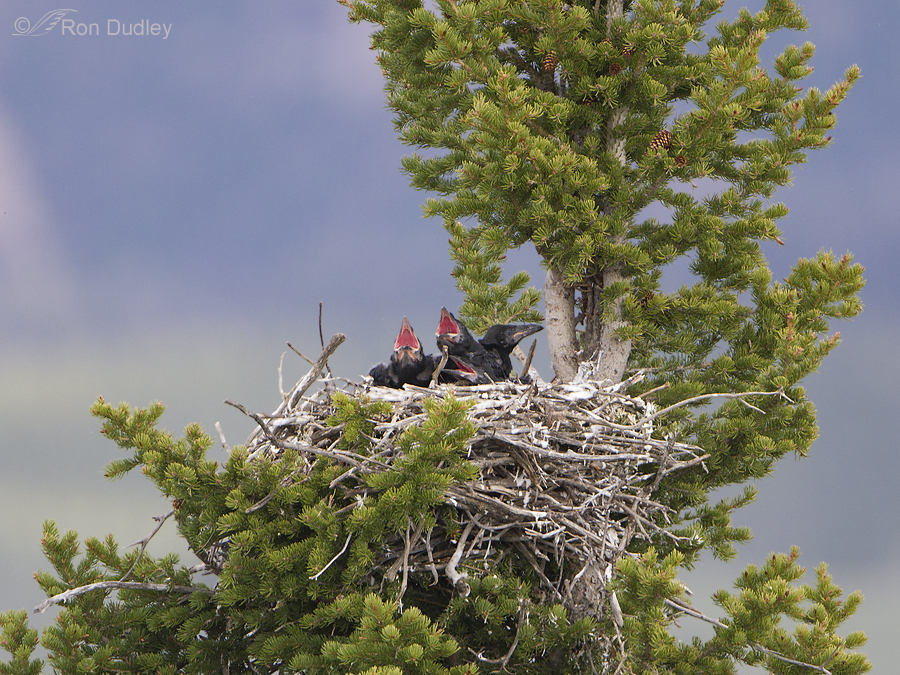
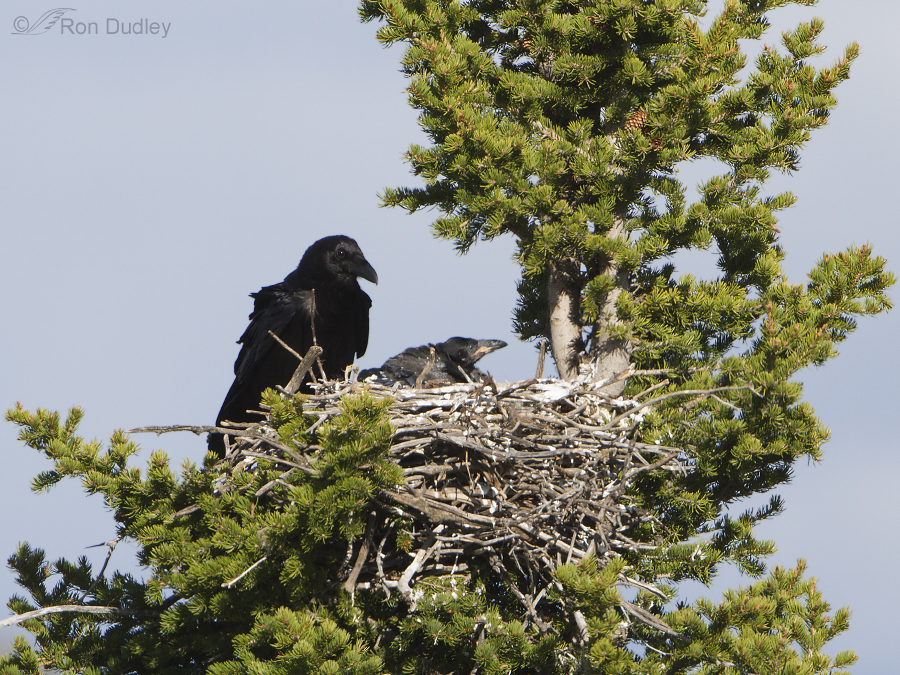
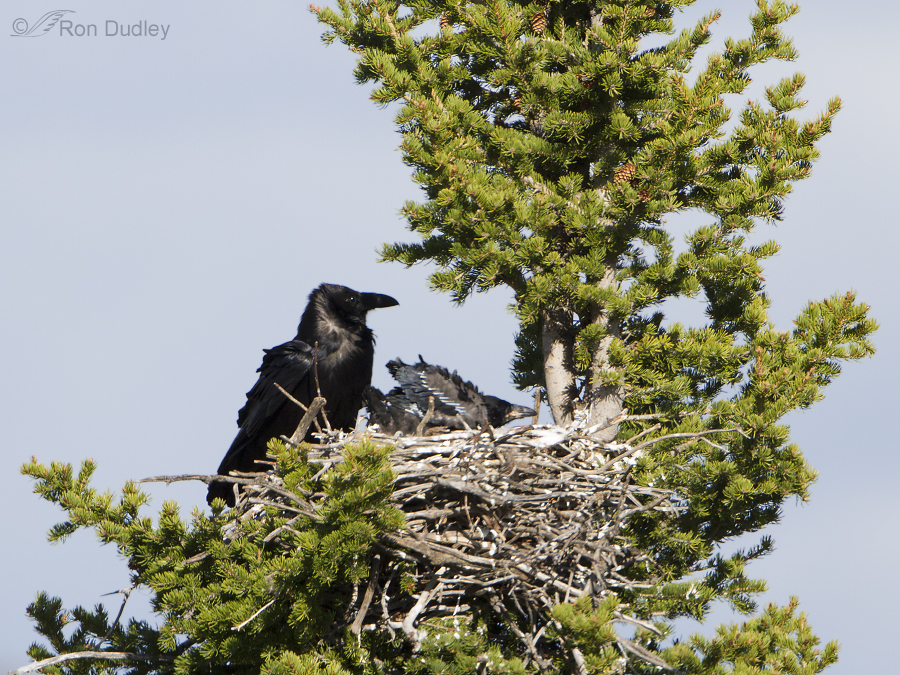
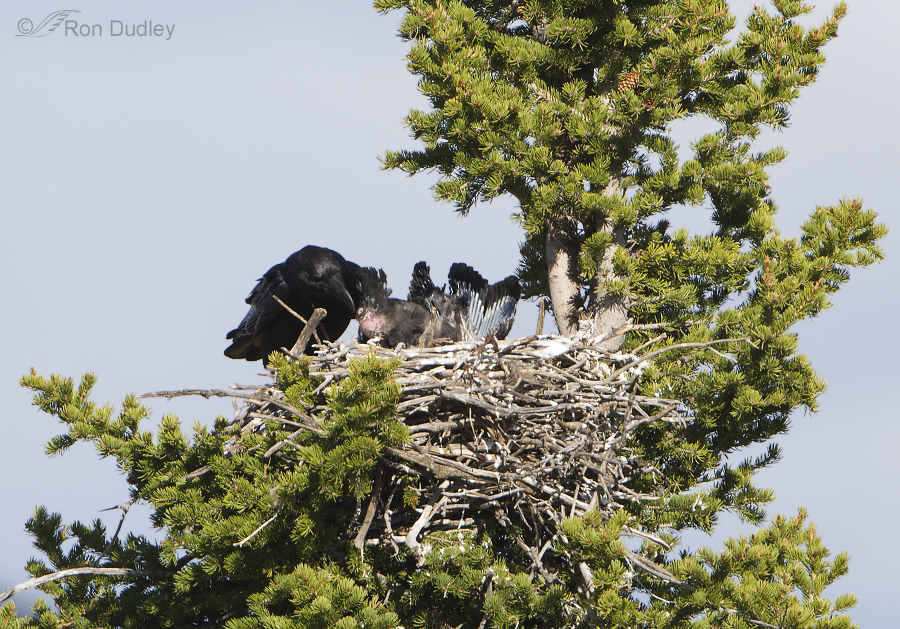
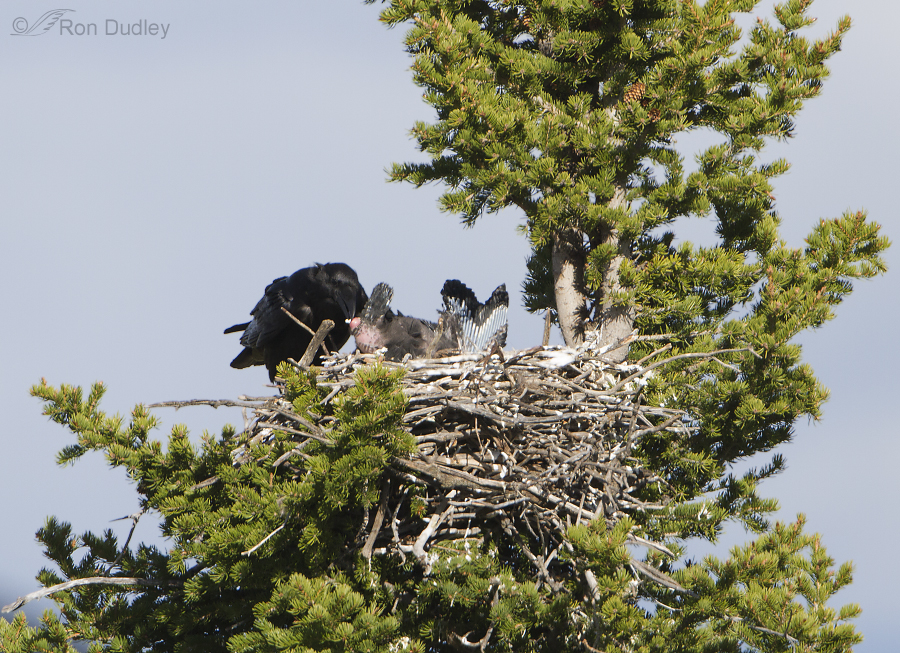
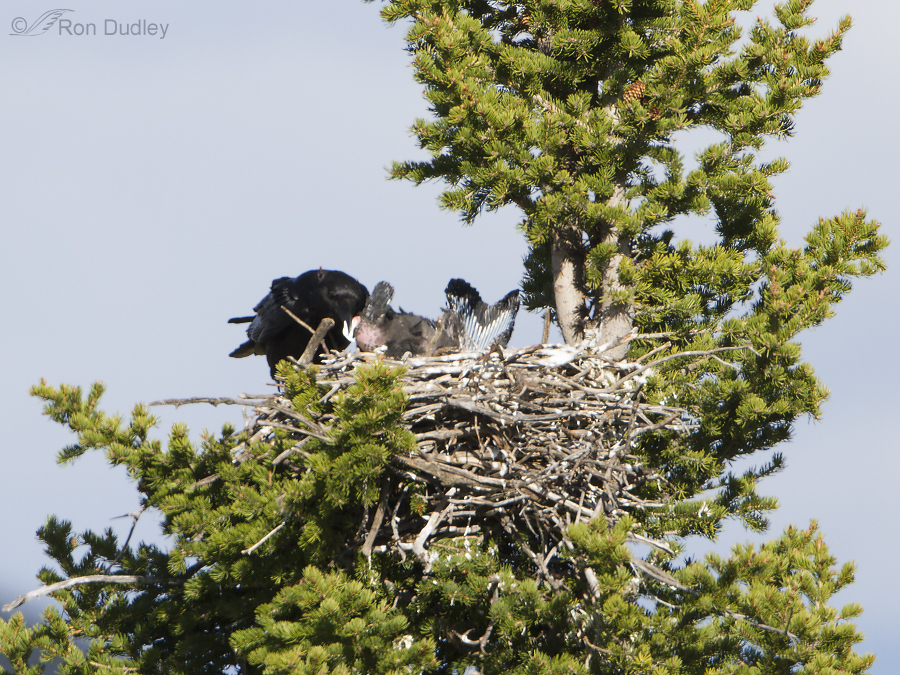
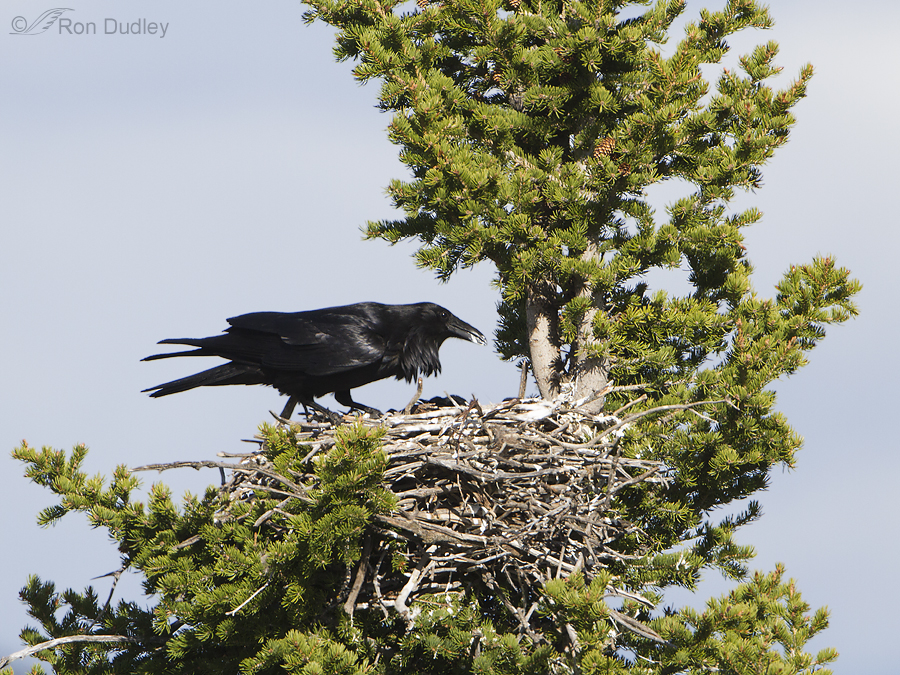
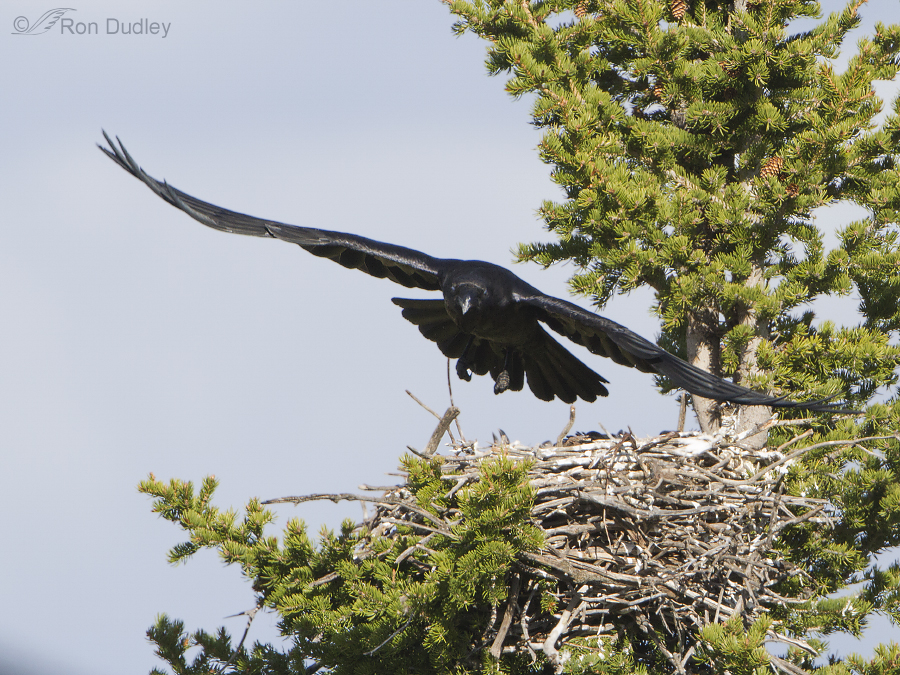
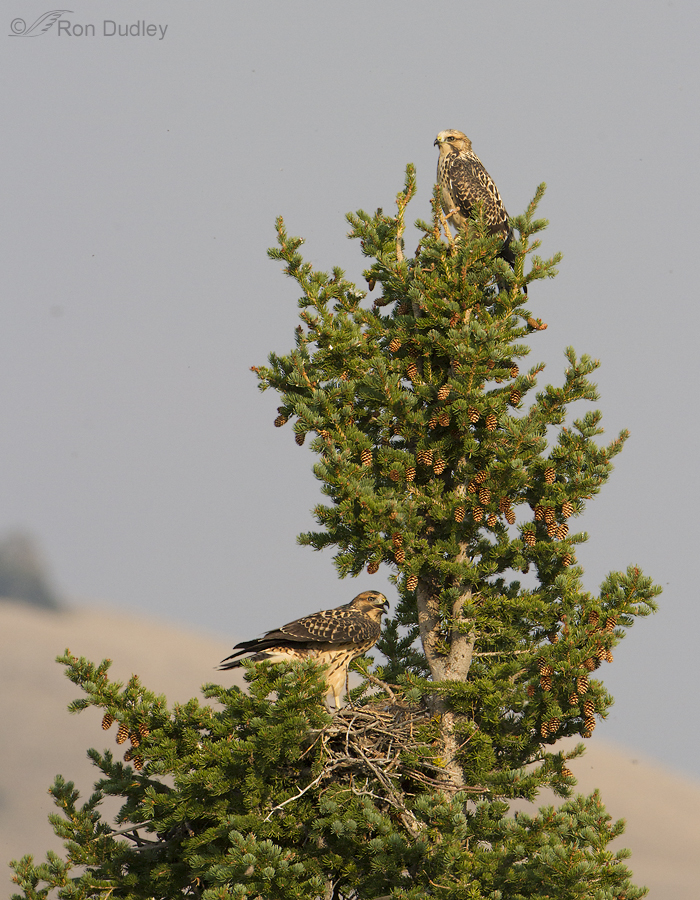
Wow! I knew many birds removed the well-formed fecal sacs from the nests but did not realize they take them directly from the bottom of the birds. Fascinating. I’ve raised hundreds of baby songbirds and it’s very obvious there’s a clear connection between food-in and garbage-out … every time you feed them, they defecate. Now I know why! So handy to have the parents there as clean-up crew. Great video, Tana – and the blackbird photos as well, John! Nature never ceases to amaze. Thanks, Ron! Louise
That’s what I didn’t know either, Louise – that they take the fecal sacs directly from their “bottoms”. Birds, their evolution and behaviors are simply fascinating!
Ron, I find crows (and other birds in this family group) to have very complex and advanced social behaviours. I wonder about 3 possibilities; is the parent’s motif to keep the nest clean; is the parent giving the chick a “colon cleansing” therapy to help the chick digest its food; or is the parent actually craving for the same food it feeds its young, even in digested form, as part of a protein rich diet it needs to thrive through parenthood? Some parents in the wild spend so much time hunting to feed their young that I wonder if this is some form of survival mechanism to keep themselves well fed as well as their chicks.
Maria, My guess is that the first of your three scenarios is most likely.
Yes, but there is no evidence that the crow has dropped the feces after pulling them. If it ate them and swallowed them, which could well be a possibility, then it’s also part of the nutritional intake they may need while parenting. This is so intriguing.
Fascinating behaviour, amazing video. Thank you Ron and Tana.
I agree, Elephant’s Child. Tana’s video clip is excellent.
Thanks Ron, That is some capture no pun intended. I also had no idea.
Thanks, Earl. I always enjoy puns, intended or not!
I’ve seen robins do the same thing with their young having observed a nest of robins just outside our window several years ago.
This must be a fairly common behavior, Ilona.
Whoa! I had no idea that parent birds might eat the little gift! After all these years of acting as a foster parent (with permits!) to hundreds of wild nestlings, I thought my role was simply to keep things tidy. Time to draw the line. Recycling indeed!
Thank you Ron, and John and Tana, for the education!
Your comment brought a chuckle, Mikal. Thanks for that.
Absolutely fascinating! Thanks for the information and the wonderful shots Ron!
Charlotte
Thank you, Charlotte.
Interesting behavior. Red-winged Blackbirds do much the same thing, as the last five shots in this gallery show.
http://skygardener.zenfolio.com/p51590892
Neat shots, John. As is often the case, I’m learning a lot from my own blog (largely from the contributions of others).
What an interesting world we live in. A friend sent me this video yesterday, thought you might enjoy it. Thank you for these wonderful photos.
Fascinating clip, Tana. Thanks very much for the link. I encourage others to watch it!
Ron-Every day, I learn something new and to me, exciting, from your blog…your photos bring me beauty, greater awareness of and appreciation for the ever unfolding wonders of nature. Learning new things about the behaviors of our fellow residents, brings amazement and joy.
Thanks, Patty. This was new to me, also.